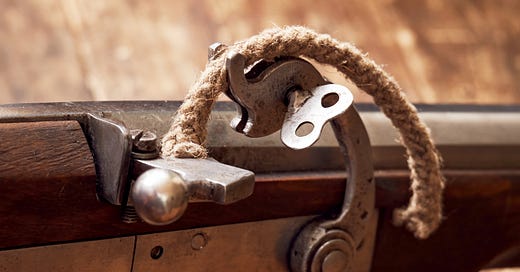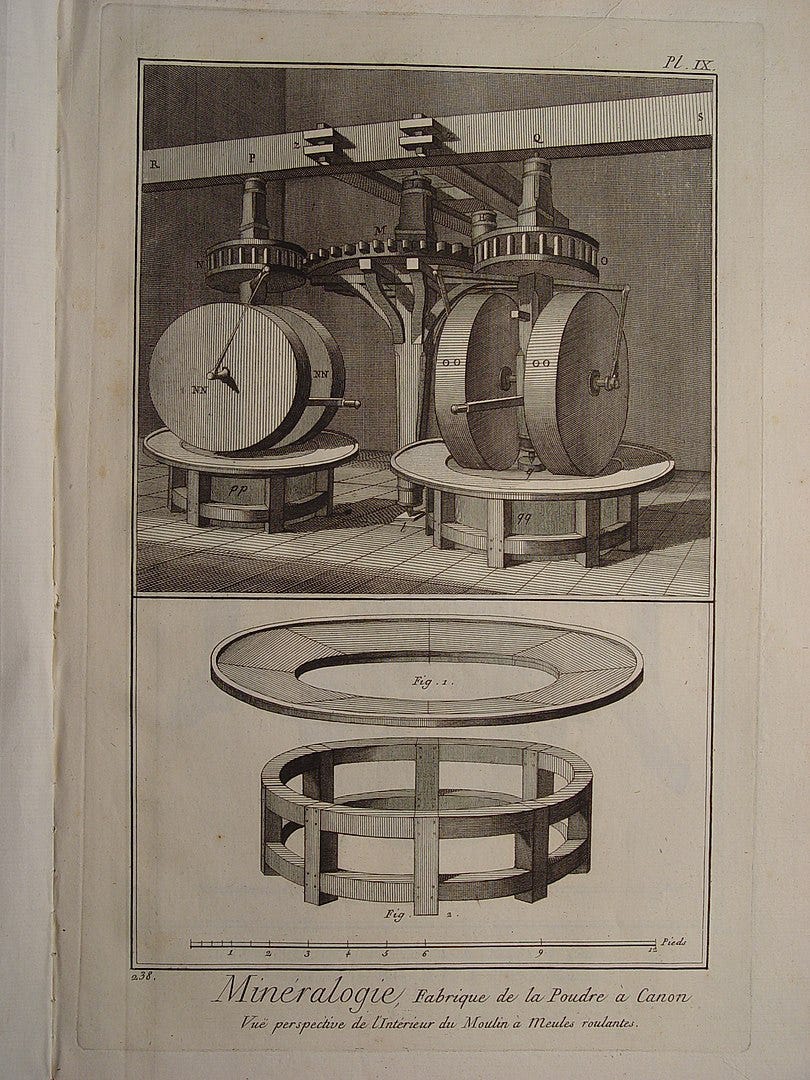Why Did Europe and Not China Dominate Gunpowder Warfare?
China invented gunpowder and made the first cannons, so why did the world not get conquered by the Chinese?

When China went headlong against great European powers in the 1600s, they quickly discovered that European gunpowder weapons were far superior to anything the Chinese possessed themselves. How had China fallen behind on a technology they pioneered? What was the secrete sauce that gave Europeans an edge in both weaponry and military tactics?
China developed black powder in the first millennia, yet by 15th century (1400 - 1500) Europe was starting to pull ahead of China. You see, gunpowder wasn't something that got discovered, but something that developed over time. Getting to the type of gunpowder which began dominating the battlefields in the 1600s was a long process.
There is historical parallel between gunpowder development and another Chinese invention developed at almost the same time: Movable type. We think of Johannes Gutenberg, inventing the printing press and movable type in 1450. Yet, the first movable type got invented in China around 1040 by Bi Sheng. The types were made of porcelain materials. Wooden movable types were later developed by Wang Zhen around 1297. So, why are we giving Gutenberg all the credit for inventing printing? Because Gutenberg served the same role for printing as James Watt did for the steam engine. Neither of the men were the original inventors of the concept, but they made improvements so radical that they made the technology transformational.
Gutenberg made a mechanical machine, a printing press, which allowed printers to greatly speed up the printing process. Asian printing with movable type was done by rubbing in ink manually. It was not done using a machine, and it was not done using mass-produced metal types. The difference was profound. Around 1600 European printing presses could output 1500 to 3600 pages per day. Chinese printing technique in contrast could only do about 40 pages per day.
There are no James Watt or Johannes Gutenberg of gunpowder and fire-arms. Instead, there are several people, most of whom we will never know the names of. English friar Roger Bacon and German monk Berthold Schwartz are often mentioned, but we don't know if Schwartz even existed. However, information about guns in Florence, Italy has been recorded in 1326. Roger Bacon gives the first known description of gunpowder in Europe in 1267.
What is important about this description is that it sets it apart from the early Chinese black powder, which cannot be called gunpowder. It has the same key ingredients: potassium nitrate (KNO3), charcoal (C ) and sulfur (S), but with much lower amounts of potassium nitrate, also known as saltpeter.
Some call this mix low nitrate black powder, in contrast to gunpowder, which is high nitrate black powder. With a low amount of saltpeter, black powder will burn slowly. Such black powder is suitable for rockets. When making fireworks, it is practical with slow burning black powder. However, for bombs and firearms, we need fast burning black powder. That is what we call gunpowder. Gunpowder will combust in 25 microseconds. That allows us to go from something that gives a flash and fizzle to something that gives us a bang and can be used in warfare.
The Chinese made the first handheld weapons using black powder called fire lances, but they worked more like flamethrowers, due to the slow burning. Similar kinds of weapons had been by the Greeks and Byzantines. Instead of black powder they used an incendiary mix called Greek fire which we still don't know the exact recipe for. Fire lances would evolve into hand cannons in China. That is where fire-arms development stops in China.
Revolutionizing Gunpowder Production
Europe gets black powder from China. From there on, a parallel development is happening. Improvements happen along several axes:
Make gunpowder burn faster by increasing content of saltpeter
Increase saltpeter purity
Improvements in techniques for mixing components
Saltpeter is one of the most important components of gunpowder. Understanding the evolution of gunpowder making is centered around understanding the production and purification of saltpeter. I wrote an article specifically focused on how saltpeter was historically produced and refined:
One of the takeaways from that story is that making more pure saltpeter required the development of quite complex operations. Unlike China, Europe did not have naturally occurring saltpeter, but instead relied on producing it from urine using a complex fermentation process with dirt and manure from animals. This condition pushed Europeans to experiment more with purification of saltpeter, which gave higher quality saltpeter than what was common in China.
The gunpowder corning revolution
The real revolution came with the invention of corning in Germany in the late 14th century (1300 - 1400). Corning was a unique European development which did not happen in China. It was a development which made gunpowder up to 300 percent stronger, and far more practical and safe to use.
Gunpowder before corning is referred to as serpentine. Serpentine is based on dry mixing of all the ingredients in powder form. There are many problems with mixing gunpowder this way. It is quite dangerous as you could more easily cause the compound to explode if you are not careful. The second concern is that under transportation, the various mixtures would start to separate based on density. Thus, when gunpowder is poured into a cannon at the battlefield, it ends up working poorly because the components are not properly mixed.
Corning implies wet mixing. You keep the powders wet while you mix them. That way, it is much safer to perform the mixing. The wet mixture would get pressed into flat sheets which are left to dry. After drying, they are broken apart carefully and tumbled in a wooden barrel to smoothen the grain particles. Afterwards, the grains are sifted to sort the gunpowder by grain size. We are left with gunpowder consisting of larger grains instead of fine dust. The benefit is that within each grain, all the ingredients are mixed properly. During transportation, we avoid getting the ingredients to separate. It also turns out that the fire spreads more easily between these larger grains than between powder dust particles. Combined with a more optimal mix of ingredients, this approach gives us a mix which is up to 3 times more powerful than serpentine.
The European mill revolution
Europe in this period also sees another advantage over China: The prevalence of mills. Terry Reynolds, the leading technological historian of the watermill, has contended that:
"If there was a single key element distinguishing western European technology from the technologies of Islam, Byzantium, India, or even China after around 1200 CE, it was the West’s extensive commitment to and use of water power."
Europeans did not just use mills for grinding flour. Mills were used for all sorts of production in Europe. Most important for this story is the use of powder mills. In a powder mill, charcoal and sulfur would first be ground to fine powders. Next saltpeter, sulfur and charcoal got mixed with water and kneaded and compacted beneath heavy rotating wheels. The results are sheets of gunpowder which would later get dried and then cut into pieces by a corning mill or kernelling mill. Sorted kernels of desired size were dried and mixed with graphite to be tumbled in glazing mill barrels. Graphite coating reduced the tendency of grains to stick together in storage.
The first powder mill driven by water power was erected near Nuremberg, Germany in 1435. In the Netherlands, there were numerous powder mills driven by windmills. At its peak the Netherlands had over 10,000 windmills in operation used for all sorts of industrial purposes. Britain alone had around 10,000 water wheels already in 1300.
This sort of proto-industrial revolution in Europe allowed Europeans to produce gunpowder in large volumes and lower price than what could be achieved in the far East and in the muslim world.
Evolution of Gunpowder Weapons
Chinese gunpowder weapons went no further than the hand cannon. These first hand-held firearms were clunky to operate. Holding still and aiming was difficult since you had to put a burning fuse into a hole to fire the gun. That meant you only had one arm to steady the hand cannon.
In Europe, the evolution continued towards guns with better firing mechanisms: First the matchlock, then wheellock and finally flintlocks. Flintlocks became widely used in the 1630s in Europe. Thus, by the time China began having extensive interactions with Europeans in the 1600s, Europeans enjoyed a clear military advantage.
The question is: Why did Europeans evolve more advanced guns and better gunpowder? A key reason was the fundamentally different social, economic and military situation in Europe compared to China.
If you don’t want to be a substack subscriber, you can read the rest of this article on Medium.
Keep reading with a 7-day free trial
Subscribe to Erik Examines to keep reading this post and get 7 days of free access to the full post archives.









